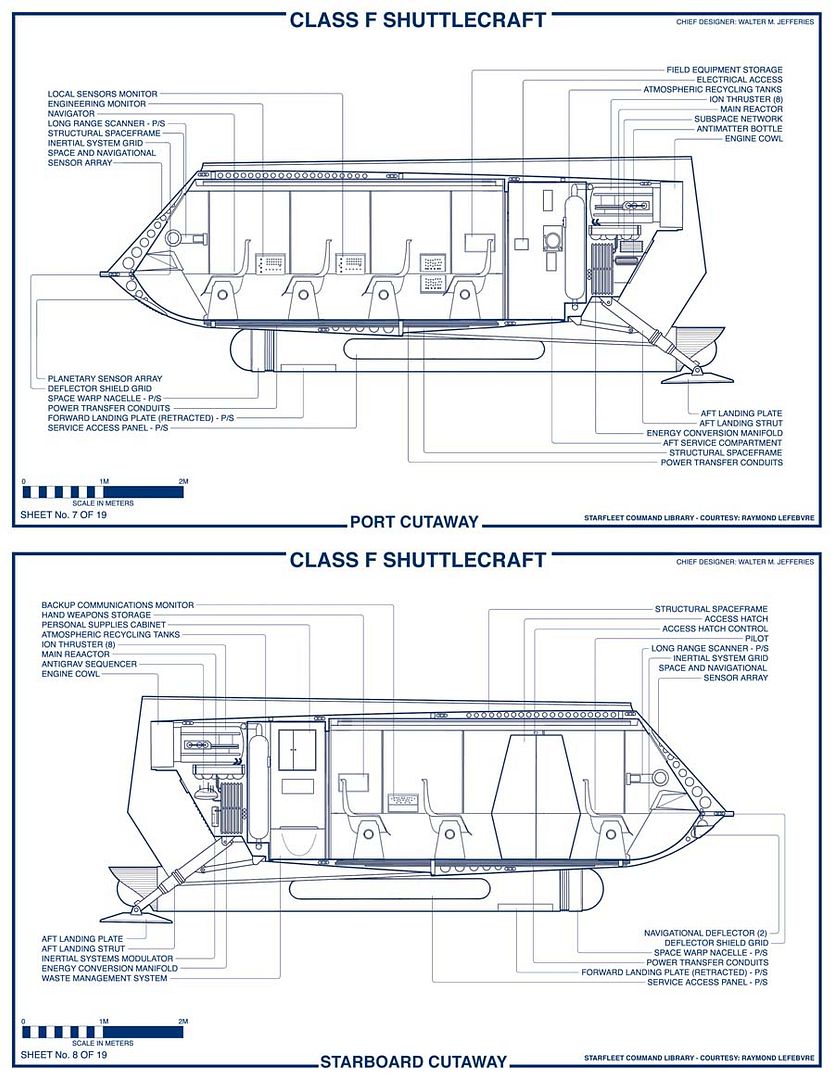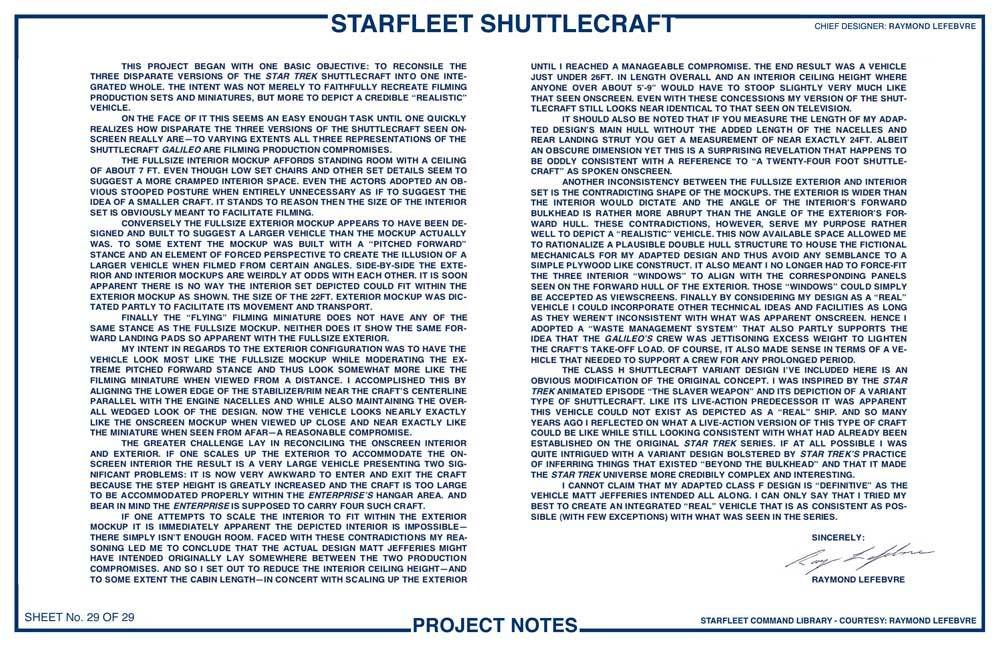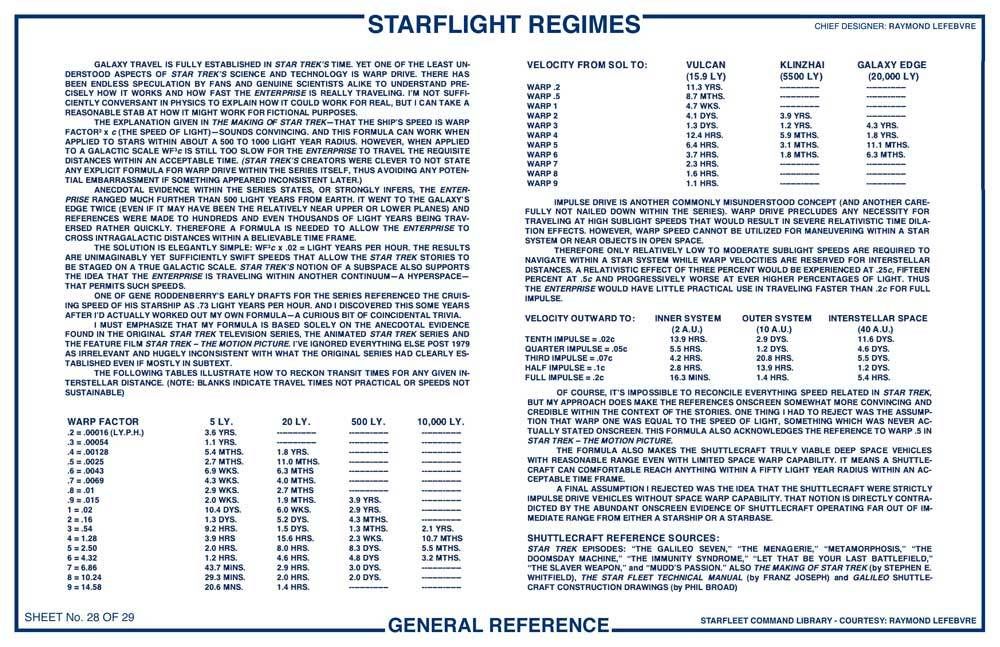Also, if you can go back and quote the part where I had a problem with a shuttlecraft being a magic flying box, that'd be super.
You said...
"Beyond that, the original point of the comparison was that Trek shuttles didn't have enough space devoted to the machinery necessary to support the cabin, which is clearly backed by the comparion."
Saying that the shuttles
didn't have enough space devoted to the machinery necessary to support the cabin displays you are having a problem with the shuttles as a
magic flying box.
And here I thought it displayed that I read and understood
Dayton's original post. Should I have been more clear I was restating the thesis of the thread while I was clearly restating the thesis of the thread?
As for the first part of your post... are you sure that you want anyone to elaborate on that?
Oh, yes. Let's crack out our slide rules and do volume calculations of both craft, and then argue endlessly about how many cubic meters you need before you can call something "quite a bit larger." And then, because I'll have grown to despise all of you, I'll whip out statistics for all of the other shuttles that are
considerably smaller than a modern fighter jet in every possible measure. Of course, the issues of gross size are largely irrelevant to the topic of the thread, because the topic is that
It seems to me that for all the things they can do, the shuttles should be the size of jetliners. Or at least the size of 21st century jet fighters.
... which I've helpfully quoted this time so we're all
really really sure that I don't actually have a dog in this fight beyond my original desire to correct a misestimation of scale and, later, an implication that the F-22 is shaped like a lawn dart, and shuttlecraft are perfect cubes.
Yeah, that sounds
fun.
I'm seeing people today (your argument here being a timely example) having an increasingly difficult time imagining more advance technologies. In forty years we are seeing less imagination of what could be and more of people attempting to say that it must be like it is today.
That's rather irrelevant. The Trek shuttles (and Lost In Space's Pod, and Battlestar Galactica's Raptors and Vipers) are so small compared to their real-world analogues because it's more cost-effective if 20 feet of usable shuttle set only needs 20 feet of shuttle prop, as opposed to 20 feet of shuttle set needing a hundred foot long prop.
Consider the fact that in movies (with larger budgets), or video games (where you don't have to build a set), or even craft that simply don't have to be built on stage, there's considerably more space for machinery. The reason the Enterprise has an entire secondary hull and two outboard pods for engines, consumables, and auxiliary craft, and the Galileo has small closet to serve the same purpose is not that Matt Jefferies only heard of Clarke's Third Law after he designed the larger ship.
You may be having problems phrasing your ideas badly, but I can only go off of what you've said.
No, you can go off the context. I'm not making these posts in a vacuum, you know. There's no reason to be willfully obtuse and assume that if I'm restating a point I never made, but someone else did, I actually
did advocate that point and my explicit statement to that effect just vanished off into the ether.
Thanks for saying that so I didn't have to. It's really frustrating to have someone who has probably never been within a half-mile of one of these vehicles telling me (having actually designed a major system installed on the aircraft) that I don't know what I'm talking about.

Unless you designed a giant cardboard box it's shipped in (and a matching one for a Starfleet Type-11 shuttlecraft), I'm not sure what your appeal to authority actually says about your ability to tell "big" from "not quite as big" as compared to mine.
I was really hoping my "flagpole" argument would have gotten him to thinking about the difference between "maximum dimension" and "actual size." No such luck, unfortunately. Oh well.
And I was hoping my pretty picture would've gotten you to realize that the shuttle was smaller not just in length, but also width and height, than the aircraft. Let me see if I can make it clearer.
If I were to make a box of the same length, width, and height as a Type-11 Shuttle, that box would fit inside of another box which was of the length, width, and height of an F-22 Raptor. Conversely, the Raptor-sized box would
not fit inside the Shuttle-sized box, because it is larger in length, width, and height. All three.
This is what I imagined when you asserted the Shuttle was "quite a bit larger."
Now, for some reason that defies understanding, instead of making cogent arguments that, say, much of that size on the Raptor being taken up by the wings and tail, and the body of the aircraft is not nearly so large as the body of the shuttle, you've instead taken advantage of the fact that I only quoted the length of the two craft, and asserted that despite being shorter in length, the Shuttle is taller and/or wider than the Raptor.
Which it's not.
There's a picture.
If you like, you can print it out, grab a ruler and pen and check my scaling.







